Triple Glazed Windows Cost
Last updated 18th September, 2024
Thinking of investing in triple glazed windows but need to know the costs?
This article discusses the cost of triple glazed windows and sheds some light on the different types of triple glazing, styles of windows and the installation fees for this type of work. Average costs for each triple glazed window can be anywhere between £500 and £3,800.
Let's get started below!
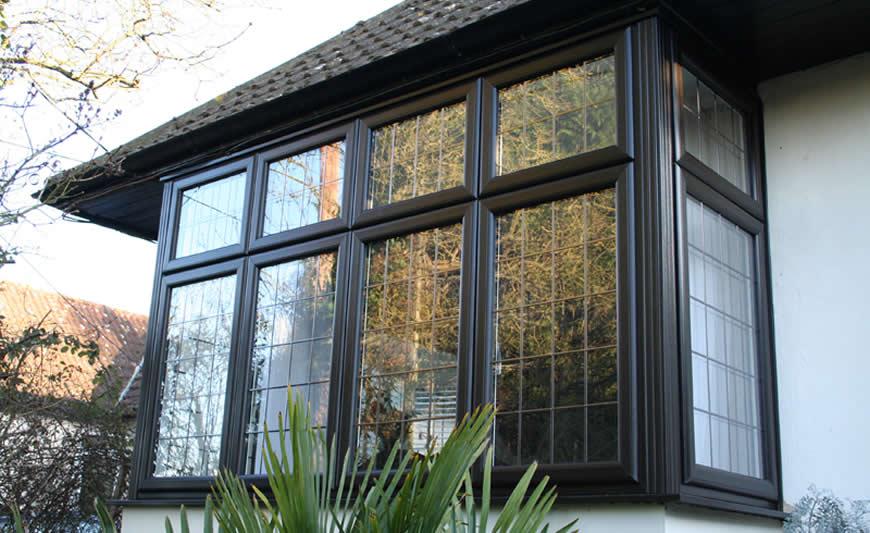
How Much Does Triple Glazing Cost?
The average cost of triple glazing for a three bedroom semi-detached home with seven replacement windows is £4,000-£5,000. There are a variety of window styles available in triple glazing including casement, sash, bay, tilt and turn, cottage and flush casement.
The style will be a determining factor in the cost as will the size and the number of windows installed. A flush casement will be around 15% more than a normal lipped casement while a sash window will be approximately 50% more.
Tilt and turn windows cost about 25% more than a casement window, and a bay window will be about double. Cottage or traditional windows will also be around double the cost of a casement window.
The chosen frame material will also impact the price as there is a range of materials available such as uPVC, aluminium and wood. Timber frames will cost about 50% more than uPVC and aluminium will be around 25% more. uPVC frames come in various colours at the cost of around 10% more than white while wood grain effect will cost approximately 15% more than a standard frame finish.
What else can affect the price of triple glazing?
Location in the UK is another price factor to be considered with prices in London and the south-east always higher than other parts of the country. This is mainly due to the higher cost of living and insurance for companies and tradespeople.
Access to the windows will create another cost if scaffolding is required to replace them safely; this can be in the region of £900-£1,100 for a week.
Your triple glazing calculator should take all aspects of the installation of replacement windows into consideration.
Table of Contents
- How much does triple glazing cost?
- Labour costs and time frames
- What does installing new triple glazed windows entail?
- Cost affecting factors of triple glazed windows
- DIY triple glazed window installation
- What is triple glazing?
- How does triple glazing work?
- Benefits of triple glazed windows
- Triple glazing vs double glazing
- Do I need triple glazing?
- Style of triple glazing windows
- Triple glazing window frames
- Building Regulations for triple glazing
- Planning permission for triple glazing
- Cost of removing triple glazed windows
- FAQs
- How to find & hire a triple glazing window fitter?
- Sources
Triple Glazed Windows Prices
Here are the average costs for triple glazed windows:
| Window Frame Type | Window Style | Price Per Window |
|---|---|---|
| uPVC | Casement | £500-£1,250 |
| Timber | Casement | £750-£1,900 |
| Aluminium | Casement | £650-£1,550 |
| uPVC | Flush Casement | £600-£1,500 |
| Timber | Flush Casement | £850-£2,200 |
| Aluminium | Flush Casement | £750-£1,800 |
| uPVC | Sash | £750-£1,900 |
| Timber | Sash | £1,200-£3,000 |
| Aluminium | Sash | £950-£2,500 |
| uPVC | Tilt & Turn | £600-£1,550 |
| Timber | Tilt & Turn | £950-£2,500 |
| Aluminium | Tilt & Turn | £800-£2,000 |
| uPVC | Bay | £1,000-£2,500 |
| Timber | Bay | £1,500-£3,800 |
| Aluminium | Bay | £1,250-£3,000 |
| uPVC | Cottage | £900-£2,250 |
| Timber | Cottage | £1,350-£3,500 |
| Aluminium | Cottage | £1,100-£2,750 |
uPVC Windows Cost
Average cost of uPVC triple glazed windows:
| Window Style | Number of Windows | Cost |
|---|---|---|
| Casement | 4 | £2,000-£5,000 |
| Casement | 7 | £3,500-£9,000 |
| Casement | 9 | £4,500-£11,250 |
| Casement | 12 | £6,000-£15,000 |
| Flush Casement | 4 | £2,500-£6,000 |
| Flush Casement | 7 | £4,000-£10,500 |
| Flush Casement | 9 | £5,500-£13,500 |
| Flush Casement | 12 | £7,000-£18,000 |
| Sash | 4 | £3,000-£7,500 |
| Sash | 7 | £5,250-£13,000 |
| Sash | 9 | £6,750-£17,000 |
| Sash | 12 | £9,000-£23,000 |
| Tilt & Turn | 4 | £2,500-£6,000 |
| Tilt & Turn | 7 | £4,000-£11,000 |
| Tilt & Turn | 9 | £5,500-£14,000 |
| Tilt & Turn | 12 | £7,000-£19,000 |
| Bay | 4 | £4,000-£10,000 |
| Bay | 7 | £7,000-£17,500 |
| Bay | 9 | £9,000-£22,500 |
| Bay | 12 | £12,000-£30,000 |
| Cottage | 4 | £3,500-£9,000 |
| Cottage | 7 | £6,000-£16,000 |
| Cottage | 9 | £8,000-£20,000 |
| Cottage | 12 | £11,000-£27,000 |
Wooden Windows Cost
Average cost of wooden triple glazed windows:
| Window Style | Number of Windows | Cost |
|---|---|---|
| Casement | 4 | £3,000-£7,500 |
| Casement | 7 | £5,250-£13,000 |
| Casement | 9 | £6,750-£17,000 |
| Casement | 12 | £9,000-£23,000 |
| Flush Casement | 4 | £3,500-£9,000 |
| Flush Casement | 7 | £6,000-£15,500 |
| Flush Casement | 9 | £7,500-£20,000 |
| Flush Casement | 12 | £10,000-£26,500 |
| Sash | 4 | £5,000-£12,000 |
| Sash | 7 | £8,500-£21,000 |
| Sash | 9 | £11,000-£27,000 |
| Sash | 12 | £14,500-£36,000 |
| Tilt & Turn | 4 | £4,000-£10,000 |
| Tilt & Turn | 7 | £6,500-£17,500 |
| Tilt & Turn | 9 | £8,500-£22,500 |
| Tilt & Turn | 12 | £11,500-£30,000 |
| Bay | 4 | £6,000-£15,000 |
| Bay | 7 | £10,500-£26,500 |
| Bay | 9 | £13,500-£34,000 |
| Bay | 12 | £18,000-£45,500 |
| Cottage | 4 | £5,500-£14,000 |
| Cottage | 7 | £9,500-£24,500 |
| Cottage | 9 | £12,000-£31,500 |
| Cottage | 12 | £16,000-£42,000 |
Aluminium Windows Cost
Average cost of aluminium triple glazed windows:
| Window Style | Number of Windows | Cost |
|---|---|---|
| Casement | 4 | £2,500-£6,000 |
| Casement | 7 | £4,550-£11,000 |
| Casement | 9 | £6,000-£14,000 |
| Casement | 12 | £8,000-£18,500 |
| Flush Casement | 4 | £3,000-£7,000 |
| Flush Casement | 7 | £5,250-£12,500 |
| Flush Casement | 9 | £6,750-£16,000 |
| Flush Casement | 12 | £9,000-£21,500 |
| Sash | 4 | £4,000-£10,000 |
| Sash | 7 | £6,500-£17,500 |
| Sash | 9 | £8,500-£22,500 |
| Sash | 12 | £11,500-£30,000 |
| Tilt & Turn | 4 | £3,000-£8,000 |
| Tilt & Turn | 7 | £5,500-£14,000 |
| Tilt & Turn | 9 | £7,000-£18,000 |
| Tilt & Turn | 12 | £9,500-£24,000 |
| Bay | 4 | £5,000-£12,000 |
| Bay | 7 | £9,000-£21,000 |
| Bay | 9 | £11,250-£27,000 |
| Bay | 12 | £15,000-£36,000 |
| Cottage | 4 | £4,500-£11,000 |
| Cottage | 7 | £8,000-£19,000 |
| Cottage | 9 | £10,000-£25,000 |
| Cottage | 12 | £13,000-£33,000 |
Average Cost of Different Glass Options
Here are the prices for different types of glass you can have in your triple glazed windows:
| Type of Glass | Price Range per Metre |
|---|---|
| Clear annealed | £25-£50 |
| Clear toughened | £35-£60 |
| Obscure annealed | £30-£60 |
| Obscure toughened | £35-£65 |
| Laminated clear | £35-£65 |
| Laminated obscure | £65-£100 |
Average Cost of Different Sized Windows
Here's what you can expect to pay for different sized windows:
| Type of Window | Size of Window | Average Cost |
|---|---|---|
| White uPVC | 1000mm x 500mm | £300 |
| White uPVC | 1000mm x 1000mm | £350 |
| White uPVC | 1200mm x 1200mm | £400 |
| Woodgrain uPVC | 1000mm x 500mm | £400 |
| Woodgrain uPVC | 1000mm x 1000mm | £500 |
| Woodgrain uPVC | 1200mm x 1200mm | £550 |
Supply Cost
Below is the supply only cost of triple glazed windows in various styles. The price does not include labour or installation costs.
| Window Frame Type | Window Style | Price Per Window |
|---|---|---|
| uPVC | Casement | £250-£350 |
| Timber | Casement | £350-£450 |
| Aluminium | Casement | £300-£400 |
| uPVC | Flush Casement | £250-£350 |
| Timber | Flush Casement | £400-£500 |
| Aluminium | Flush Casement | £300-£400 |
| uPVC | Sash | £350-£450 |
| Timber | Sash | £400-£500 |
| Aluminium | Sash | £450-£550 |
| uPVC | Tilt & Turn | £300-£400 |
| Timber | Tilt & Turn | £350-£450 |
| Aluminium | Tilt & Turn | £400-£500 |
| uPVC | Bay | £500-£600 |
| Timber | Bay | £600-£700 |
| Aluminium | Bay | £550-£650 |
| uPVC | Cottage | £300-£400 |
| Timber | Cottage | £550-£650 |
| Aluminium | Cottage | £450-£550 |
Additional Costs
As well as the supply and installation of your triple glazed windows, there are some additional costs that may be incurred either through the necessary work or by choice.
New Blinds & Curtains Cost
Putting up new blinds or curtains is a way of enhancing the look of your new windows. There are many and varied types of window dressing available with a lot of choice in terms of style, colour and design. For blinds, you could spend anything between £15-£250 per window for fabric blinds or curtains and from £10-£100 per window for wooden blinds or shutters.
Replacement Front Door Cost
To complete your upgrade, you may want to install a new front door with something to match your new windows. Hardwood external doors can range from £200-£2,000 while uPVC cost between £250-£800. How much you decide to spend will be a personal choice, but the new door should complement the newly installed windows and may be something you should budget for.
Cost of Rendering
Unintentional minor damage may occur during the replacement or installation of your triple glazed windows, and it may be necessary for some external rendering to make good this damage. The price per square metre for rendering will vary according to the location within the UK but should fall between £25-£45 per square metre.
Redecorating the Exterior
Naturally, if it has been necessary to make some repairs to the exterior of the property, you may wish to redecorate to complete the job. This could be something that you do as a DIY project, or you could hire a professional decorator.
If you decide you can do the painting yourself, then you will need the right tools.
First, the paint should not be cheap as this would be a false economy. Good quality paint will last, and you shouldn’t have to redecorate for quite a few years.
Make sure you choose an exterior paint that is suitable for the finish on the wall, e.g. brick, stone, cement render or pebbledash and ensure that you take the time to prep the surface beforehand by cleaning, filling any cracks and sealing the surface if necessary. The paint will cost between £30-£40 for 5 litres with a coverage of 15m2 per litre, and a masonry roller kit should cost £10-£15.
The cost to hire a professional will depend on where in the UK you live and level of experience. The size of your property will be a determining factor also, and you need to consider the amount of preparation that will be required which is often the biggest part of the job. Decorators on average charge between £150-£200 per day. They will normally work alone, so you don’t need to budget for a second person.
Whether you decide to do the painting yourself or hiring a decorator, it will be necessary for you to have scaffolding erected to do the work safely and effectively. This will cost around £900-£1,100 per week.
Cost of Window Cleaning
Maintaining the look of your new windows will mean regular cleaning. Hiring a window cleaner will cost on average between £35-£75 depending on how many windows need to be cleaned and location in the UK.
Cost Breakdown Calculator
Individual costs to install 7 triple glazed windows on a semi-detached house - Total Cost: £4,000
Materials
£3,000
Labour
£800
Waste Removal
£200
Labour Costs and Time frames
The labour cost to install new triple glazed windows will be approximately 20% of your budget. An average cost for a window fitter will be in the region of £150-£200 per day. Therefore, the number and size of the windows being installed will be the biggest contributions to the overall cost.
Fitting four windows should take 1-2 days with a team of two people. A typical three bed semi will take 2-3 days to install nine windows while a larger detached property having twelve or more windows will take 3-5 days. It must be borne in mind that triple glazed windows are heavier and slightly bulkier than double glazed and may take longer to install.
The size of the windows will be a significant factor, although the style should not be a time factor. A reputable window installer should have experience of most types of triple glazed windows and be familiar with a wide variety of window types.
A delay factor could be limited or restricted access to the property, which may mean extra manpower or extended work hours may be required to complete the work on time. This will potentially have an impact on labour costs.
Awkward and hard to reach areas within a property may present a similar problem and should be discussed with the installer before work commences to ensure that the issue is brought to everyone’s attention prior to installation day.
Bad weather can delay any project which is conducted partially outside, and this could impact how long the work will take.
What Does Installing New Triple Glazed Windows Entail?
It is advisable to do some research into the various options available to you before you decide on the different aspects of your window installation. This should include finding out which installers are properly accredited and speaking to them before you make any decisions or window choices. There is no substitute for professional and up to date advice before you proceed with your project.
If you are simply replacing the windows in your property, then the location of the windows will be decided for you. However, if you are working on a refurbishment project or a new build, then this may still be open to thought and advice.
The same principle regarding location will be applied to the size of your windows. In a straightforward replacement, you will simply be replacing like for like in terms of size. For a refurbishment or new build though there may be room to change the size or shape of an aperture, perhaps to make better use of the properties of the triple glazing or to gain more light or enhanced view.
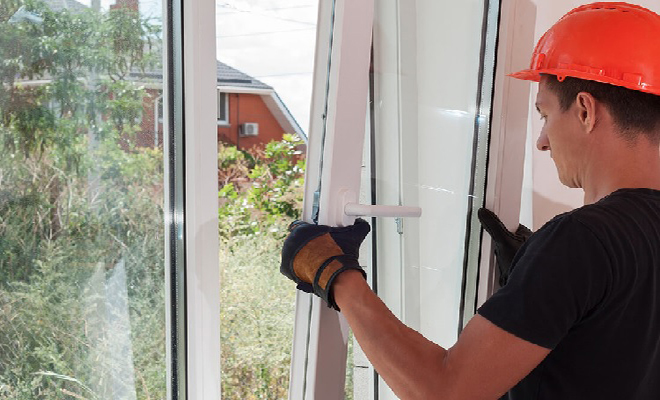
When it comes to specification, then you have a choice regarding which material to use for the frame, timber, uPVC or aluminium as well as the finish and colour.
Access to the site is something that isn’t always an obvious point of discussion but will have an impact on the ease, speed and safety of the work being carried out. Ensuring vehicles and operatives can enter and leave the site without hindrance and in safety is an important consideration.
As mentioned, the kind of project that you are embarking on will be an important point to raise with your window installer. A refurbishment or new build may have different requirements to a replacement project so it should be discussed at your initial meeting with your installer.
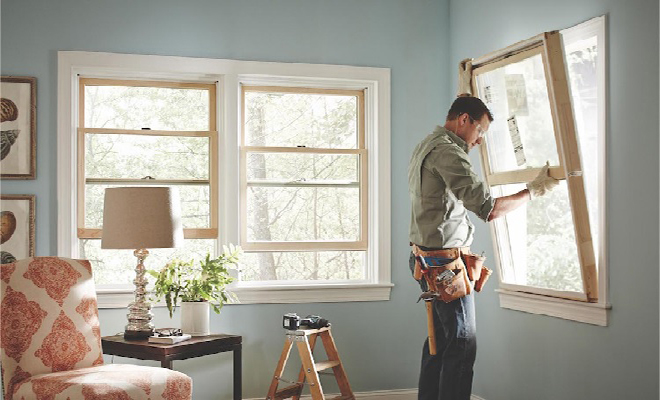
Cost Affecting Factors of Triple Glazed Windows
With a variety of window styles to choose from the cost of triple glazing can be difficult to generalise. However, there is an average difference between the different types of windows that can be applied to help your budget.
Style of Window
Casement windows are the most common style and are generally the most inexpensive due to their simple operation. Flush casements are approximately 15% more expensive but have a cleaner line and are becoming increasingly popular. Sash windows are more often chosen for their traditional look to compliment an older property and cost around 50% more than a casement window.
Similarly, cottage windows are frequently used in old-style houses to maintain the heritage look of the property, they cost in the region of 50% more than a casement. Tilt and turn windows cost approximately 25% more and bay windows are the most expensive being around double the cost of a casement window on average.
Number of Windows
The number of windows is an obvious factor that will impact on the overall cost. It may be worth considering a combination of double and triple glazing for your home with the triple glazed windows reserved for the colder, shaded aspects of the property and the double glazing for the more exposed faces.
Triple glazing windows will prove their worth more in a colder environment, so this mix and match approach may be a way of limiting your triple glazing cost.
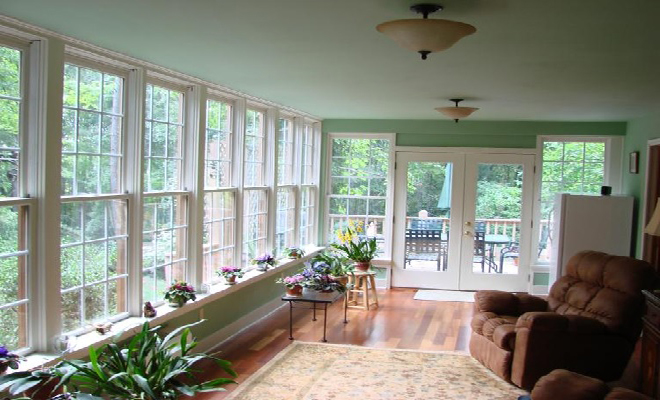
Size of Windows
The size of your windows will affect your budget, but unless you are constructing a new build, this is not something that you can change to any significant degree. Most homes will have a variety of window sizes with living areas usually having the largest.
Therefore, it may be worth considering a combination of double and triple glazing dependant on aspect and size. Bear in mind that the overall insulation of your home should be at its maximum to get the most from triple glazing, so making sure the roof space, walls and doors are all well insulated is important.
Frame Material
The cost of tripled glazed windows will be influenced by the type of frame material you choose. The three most readily available frame materials are uPVC, timber and aluminium. uPVC frames are low maintenance, cost-effective and inexpensive in comparison to wood and aluminium.
They are also offered in a range of colours and in a wood grain effect, though these options will obviously increase the final price. Coloured uPVC frames cost approximately 10% more than white while wood grain effect will increase the cost by between 10-15%. Despite their relatively lower cost, the need to replace uPVC windows should be borne in mind as they are usually only guaranteed for around 10-15 years.
Many people prefer the more environmentally friendly and natural aspect of timber windows, but this comes at the cost of more than 50% on uPVC prices. Wooden windows come in hardwood and softwood with the former being more expensive but longer-lasting.
Both types require regular maintenance to keep them performing at their optimum. However, timber windows have a lifespan of around 60 years, so the cost should be weighed against the need to replace them in the future.
Aluminium windows are popular due to their durability, lightweight nature and slimline profiles. They cost on average 25% more than uPVC windows and are favoured in more modern settings although heritage windows are manufactured in aluminium also. They are very low maintenance and available in various colours.
Type of Glass
The type of glass used in your new windows will affect your triple glazed windows price. There are various choices available, clear, toughened, obscure and laminated, to name a few.
| Type of Glass | Thickness of Glass | Price Range per Metre |
|---|---|---|
| Clear annealed | 28mm-44mm | £25-£50 |
| Clear toughened | 28mm-44mm | £35-£60 |
| Obscure annealed | 28mm-44mm | £30-£60 |
| Obscure toughened | 28mm-44mm | £35-£65 |
| Laminated clear | 28mm-44mm | £35-£65 |
| Laminated obscure | 28mm-44mm | £65-£100 |
There are specialist types of glazing available such as low emissivity glass which minimises the amount of infrared and ultraviolet light which enter through the window without compromising the amount of visible light that can come through. Infrared light is transmitted as heat, so low emissivity glass helps control the internal temperature.
Ultraviolet light can cause fabric fading, so reducing the amount that comes through the window will prolong the life of your soft furnishings. Low emissivity glass will also reflect heat within the property back in and prevent heat loss through your windows. The cost will be around 25% more than standard annealed glass.
DIY Triple Glazed Window Installation
There are many home improvements which with proper research and preparation can be carried out by a competent DIY enthusiast. Triple glazing is probably not one of them. In the first instance, the installation of windows and doors must comply with Building Regulations in relation to energy efficiency, ventilation, glazing safety and fire safety.
Therefore, you will need to get approval before you do any work. This process will incur a fee, dependant on individual local authorities.
If you are confident and determined to do the work yourself, then you should ensure that you have the correct tools to do the job. The most important are listed below:
| Type of Tool | Average Cost |
|---|---|
| Suction cups | £10-£60 |
| Tape measure (5m-10m) | £5-£30 |
| Nylon mallet | £10-£20 |
| Chisel | £7-£25 |
| Bolster chisel | £5-£15 |
| Silicone sealant gun | £5-£20 |
| Hacksaw | £5-£40 |
| Scrapper | £5-£10 |
| Sharp blade | £6-£10 |
A full glazier’s tool pack can be purchased for around £75-£150.
You should also have the following safety equipment:
| Type of Safety Equipment | Average Cost |
|---|---|
| Gloves | £2-£5 |
| Safety boots | £17-£120 |
| Googles | £2-£15 |
| Dust mask | £1-£5 |
It will be necessary to have the support of a second person in order to help with lifting the window frames, holding in place, checking levels etc. This is especially the case if you will be working at height on upstairs windows, for safety reasons apart from anything else.
Potentially the biggest hazard of doing a triple glazing installation yourself is a fall from height while working on an upstairs window. Having proper scaffolding in place should reduce the risk but observing good working practices will also keep you safe.
Working in pairs is a good start as if there is an accident, then there is someone on-site to summon help. Carrying materials and tools upstairs within the property rather than up the scaffolding where practicable will also hopefully reduce the number of potential hazards.
A crush injury is another possible hazard and care should be taken to employ two people when lifting or carrying heavy loads. This is also advisable to avoid back or other muscle straining injuries. Cuts from hand or power tools account for a large proportion of visits to A&E departments every year; therefore, care should be taken, and jobs not rushed to avoid injury.
With the expertise of a professional window installer, not only are you getting the peace of mind of a job well done but also the guarantee that comes with the work. Doing the work yourself will hold no such guarantee other than the one that comes with the window units.
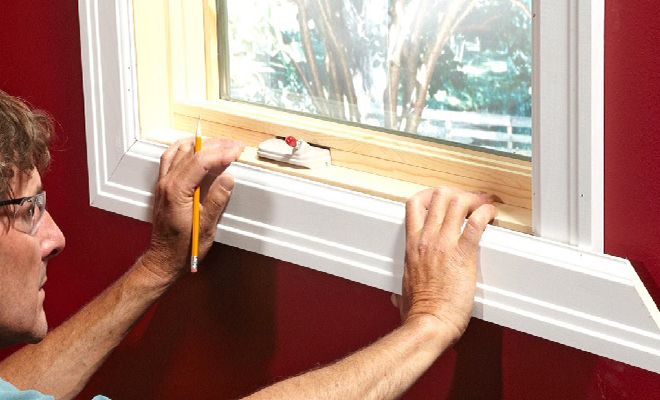
A FENSA (Fenestration Self Assessment Scheme) registered installer will prepare a certificate for you with the cost included in the price of your installation. This certificate is a legal requirement and is confirmation that your installed windows comply with Building Regulations, are energy efficient and have been registered with the local council.
Through the FENSA certificate, the warranty on your triple glazed windows is insured if the window company go into liquidation. It is also required when you sell your home.
Unless you are a regular and experienced DIY person with a well-stocked tool shed then doing a window installation yourself will mean paying out for specialist tools that most DIYers don’t usually have in their possession. One such tool is the glass suction tool for safely lifting the glazing units, which can cost up to £60. And in all honesty, when are you going to use that again?
If you did the installation yourself, you would have to pay the building control department of your local authority to come and inspect it and issue a compliance certificate. Fees vary from one local council to another, but you should allow around £200 for this service.
It must be noted that if the building control officer is not happy that the installation meets Building Regulation standards, then the certificate will not be issued. If this happens, you will need to either rectify the matter yourself to the building control departments satisfaction or employ a professional to fix the problem.
What is Triple Glazing?
Triple glazing is the combination of three separate panes of glass installed inside a sealed frame separated by a spacer. The gaps between the panes are either a vacuum or are filled with an inert gas such as argon or krypton, which improve the thermal insulation value of the window.
Originating in Scandinavia where the climate is much colder than the UK, the benefits of triple glazing are easier to identify in these more extreme conditions where they are more commonplace than in the UK. However, with around 20% of heat loss in a property escaping through windows, it is worth considering as an alternative to double glazing.
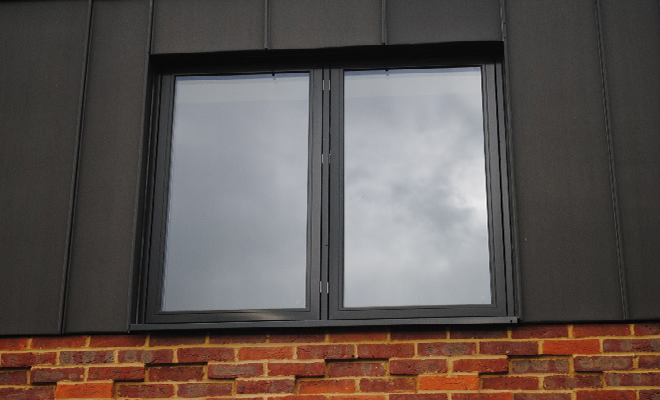
Triple glazing is made by inserting three glazing panels into a frame which are separated by a spacer, thus creating airtight gaps between the panes. This is then filled with a gas such as argon. Krypton gas is also used in the manufacture of some triple glazed windows, but as this gas is rarer than argon and therefore more expensive, it is not extensively used in the process.
How Does Triple Glazing Work?
The addition of an extra pane of glass to traditional double glazing has improved the thermal efficiency of these windows as well as enhancing acoustic insulation and providing increased security.
The primary purpose of triple glazed windows is to retain heat within a property. This is accomplished with the addition of a third pane between the inner and outer glazing. With another barrier to penetrate this extra obstacle reduces the heat loss through the window. Added to this is the addition of a coating to at least two of the glass panes which reflects the heat back into the property.
This imperceptible metallic coating creates low emissivity glass and depending on which metallic compounds are used in its creation; this glass can lower or increase solar gain. Solar gain is the amount of light that can penetrate the glass at different wavelengths.
The spacer that separates the panes within triple glazing also play a part in their energy efficiency. In earlier versions of triple glazed windows, aluminium spacer bars were used. However, it is now recognised that the thermal conductivity of aluminium creates a cold bridge for the transfer of heat.
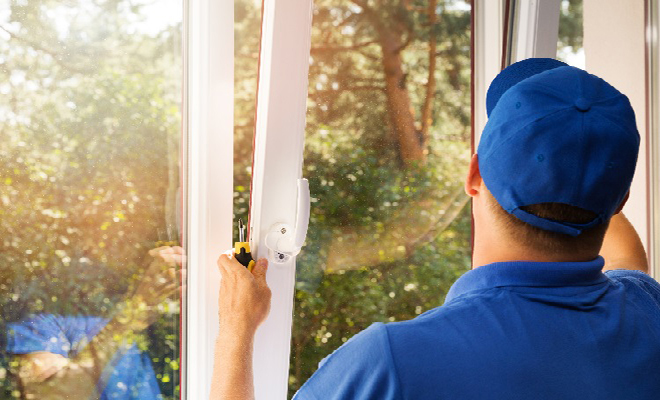
Nowadays, spacers are more likely to be made of composite material in order to eliminate this problem, thus increasing the thermal efficiency of the triple glazed unit.
The air or gas within the two gaps in triple glazing acts as an insulator against heat loss, thereby making the triple glazed window extremely energy efficient. For this reason, it is popular in countries which experience extreme winters such as Scandinavia and North America. As the UK has a temperate climate and rarely suffers severe winter conditions, the use of triple glazing in retrofit here is limited.
However, for new builds which wish to lower their energy consumption and carbon footprint triple glazing is ideal. The Passivhaus approach is geared toward ultra-low energy usage by sealing the house through effective insulation and utilising mechanical ventilation with a heat recovery system. Triple glazing is common in these types of homes.
Benefits of Triple Glazed Windows
The advantages of triple glazed windows are the reduction of heat loss through the windows, improved acoustic insulation, reduced risk of condensation and enhanced home security.
Reducing Heat Loss
Retaining as much heat as possible within your home will raise the comfort level for the occupants and hopefully mean less use of your heating system. The additional pane in triple glazing with a low emissivity coating means that heat generated within the home is reflected back into the house and doesn’t escape through the glass.
Low emissivity glass also can allow more of the infrared energy of the sun in the form of heat to penetrate through the window reducing reliance on your heating system. The heavier-than-air gas argon and krypton also insulate the window and improve its thermal efficiency.
Sound Insulation
Acoustic insulation can benefit those who live next to a busy road, town centre or underneath a flight path and triple glazing can offer that benefit. Soundwaves will be diffused as they pass through the three layers of glass as well as the gas barrier in the glazing spaces.
The distance between the glass panels within the window will account for the effectiveness of the sound insulation, the greater the gap between the panes, the better the soundproofing.
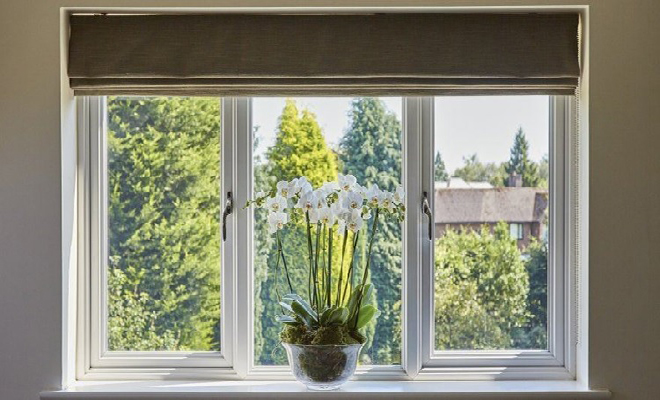
Condensation
The risk of condensation will be reduced with triple glazing as the temperature of the inner pane will more closely match the internal temperature due to the improved insulative properties of the window. In a very humid room such as a kitchen or bathroom, you may still get condensation, but with adequate ventilation at times of high use then it shouldn’t create a problem.
Security
Your home security can be increased with the addition of triple glazed windows as the three layers of glass will be much harder to penetrate than single or double glazed. The panes are normally toughened or laminated, and most triple glazed windows have internal beading meaning it is impossible to remove the glass panel from the frame to gain entry.
Triple Glazing vs Double Glazing
As the names suggest the difference between double and triple glazing is the number of glass panels within the window frame. Double glazing consists of two glazing panels separated by a spacer with the resulting gaps filled with either an inert gas such as argon or krypton or simply a vacuum.
Triple glazing incorporates an additional glass panel, thereby increasing the thickness of the unit and creating an additional space that is also either air or gas-filled.
Installing double glazing to improve the comfort of a property and reduce heating bills has been popular in the UK since the 1980s, and more than 90% of homes in the UK now have double glazed windows fitted.
Advantages of Double Glazing
- ✔ Heat retention within the property and reduced usage of heating systems with lower energy bills.
- ✔ Quieter rooms from increased sound insulation, especially on a busy road or close to a school.
- ✔ Added security from the additional glazing panel and strength of the glass.
- ✔ Low maintenance frames available with no need to paint.
- ✔ Affordable with an average casement window in uPVC costing between £250-£400.
Disadvantages of Double Glazing
- ✖ Double glazed windows as a sealed unit cannot be repaired, and if they fail, it is necessary to replace the whole unit.
- ✖ Trapping heat in the summer may make rooms uncomfortable and necessitate closing blinds or curtains to reduce the effect.
- ✖ Double glazing doesn’t always suit older properties despite a range of style and material options and can spoil the aesthetic of a traditional home.
Advantages of Triple Glazing
- ✔ Improved thermal insulation and energy efficiency.
- ✔ Better acoustic insulation with added barriers to soundwaves and gas layers to diffuse noise.
- ✔ Enhanced security due to additional glazing and toughened glass.
- ✔ Low maintenance on most frame materials.
Disadvantages of Triple Glazing
- ✖ More expensive than double glazing with a price range of £500-£1,250 for a uPVC casement window.
- ✖ No real return on investment over the lifetime of the product in the UK.
- ✖ Heavy units with increased frame thickness due to added layer of glass making installation more complicated.
Do I Need Triple Glazing?
The benefits of triple glazing include the reduction in ambient noise from outside and for this reason people may consider installing it in their homes. This is particularly the case for properties in town centres near pubs or clubs, near a road frequented by heavy traffic, close to a railway line or in the vicinity of an airport.
The impact of constant noise on a person’s health can be considerable and for those who work on shift patterns being able to sleep when the rest of the world is up and about is very difficult. The respite from external noise through the installation of triple glazing may be worth the cost in financial outlay.
Triple glazed window cost is a deterrent to many, and it is the appeal of lower energy usage and reduced carbon footprint that is arguably its greatest attraction. With energy prices increasing all the time, it is tempting to pay for the installation of triple glazing in the hope of reducing your monthly heating bills.
However, it should be noted that it is unlikely that there will be a financial return on investment during the lifetime of the triple glazed windows, particularly in the UK climate. While it will improve thermal efficiency in a house, this can only happen if the rest of the property has been well insulated.
Otherwise what you are saving through the windows could very well escape through your badly insulated roof. Installing triple glazing should be part of an overall consideration of the energy efficiency of your home.
If you are thinking of replacing your existing windows, then you will be looking at all the possible options available to you and whether you should have double or triple glazing.
Budget will be a major factor in your decision, and for this reason you should be cautious about the benefits offered by triple glazing. Triple glazing prices are not inconsiderable and weighing up the cost/benefit ratio in a temperate climate such as the UK’s is advised.
Style of Triple Glazing Windows
Here are the different styles triple glazing windows can come in:
Casement Triple Glazed Window Cost
Casement windows have been around for centuries and remain the most popular style of window in double and triple glazing. They are easy to operate and are attached to the side or top of the window frame with a hinged system.
Advantages of casement windows
- ✔ Simple to operate.
- ✔ Large range of specification options.
- ✔ Inexpensive, the most affordable of window styles.
Disadvantages of casement windows
- ✖ Easy for children to open presenting a potential fall risk if not fitted with opening restrictors.
- ✖ For ventilation, the whole window needs to be opened.
- ✖ Can lack character.
Prices for casement windows range from:
| Type of Frame | Average Cost |
|---|---|
| uPVC | £500-£1,250 |
| Timber | £750-£1,900 |
| Aluminium | £650-£1,550 |
Flush Casement Triple Glazed Window Cost
Flush casement windows were in common usage from the 19th century and have become popular in recent times. They are like casement windows but do not have a lip that overlaps the window frame, and instead sit inside the frame creating a clean, sophisticated look.
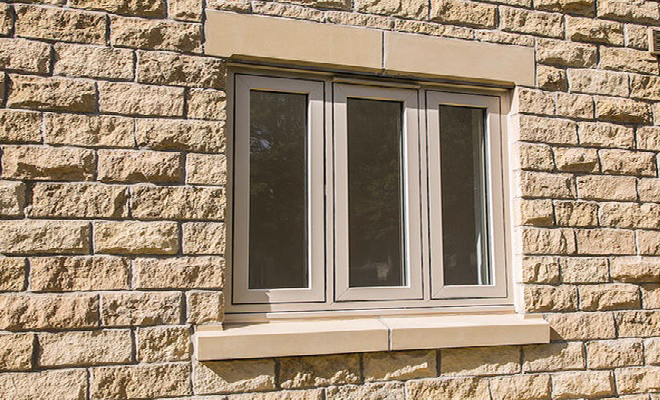
Advantages of flush casement windows
- ✔ Fit snugly into the frame giving a clean line and elegant finish.
- ✔ Ease of operation.
- ✔ Available in a range of finishes and colours.
Disadvantages of flush casement windows
- ✖ 15-20% more expensive than traditional casement windows.
- ✖ uPVC windows will need replacing in 10-15 years.
- ✖ Can look featureless.
Prices for flush casement windows range from:
| Type of Frame | Average Cost |
|---|---|
| uPVC | £600-£1,500 |
| Timber | £850-£2,200 |
| Aluminium | £750-£1,800 |
Sash Triple Glazed Window Cost
Sash windows originated in the 17th century, and the style is still very popular. A sash window comprises a frame containing a pane of glass which moves up and down with the aid of a counterbalance system or spring.
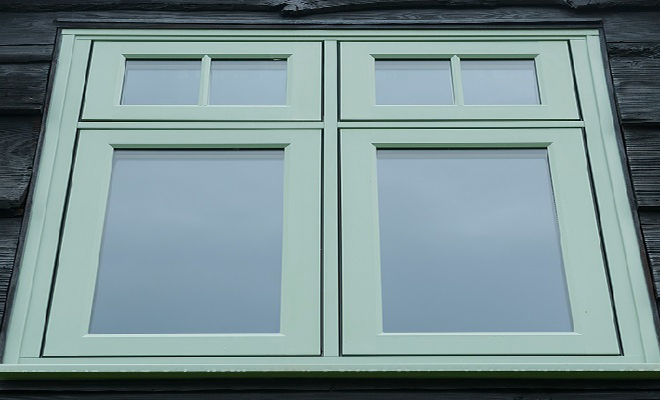
Advantages of sash windows
- ✔ Aesthetically pleasing being stylish and traditional at the same time.
- ✔ Can be easily fitted with security and child locks to prevent unwanted opening.
- ✔ Simple operating mechanism.
Disadvantages of sash windows
- ✖ More expensive than casement windows, costing up to 50% more.
- ✖ Smaller aperture for ventilation as only the size of the moving sash will be opened.
- ✖ Can be difficult to clean from inside.
Prices for sash windows range from:
| Type of Frame | Average Cost |
|---|---|
| uPVC | £750-£1,900 |
| Timber | £1,200-£3,000 |
| Aluminium | £950-£2,500 |
Tilt & Turn Triple Glazed Window Cost
Tilt & turn windows as the name suggest can both tilts open at the top to allow ventilation and open inwards as they are hinged at the side.
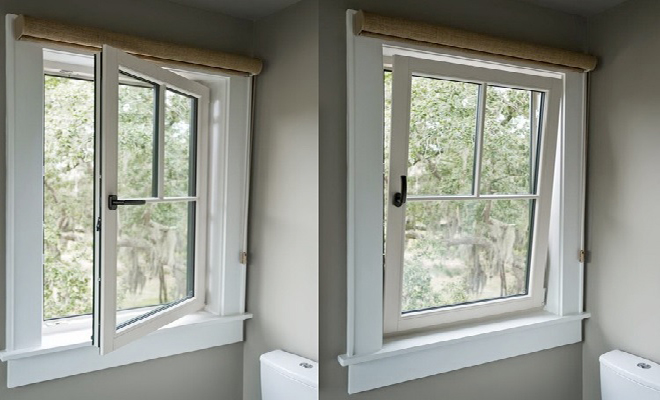
Advantages of tilt & turn windows
- ✔ Versatile and practical.
- ✔ Allow safe ventilation into the room without fully opening the window.
- ✔ Easy to clean.
Disadvantages of tilt & turn windows
- ✖ Complicated operating mechanism for both opening options.
- ✖ Wider frames to hold operating mechanism.
- ✖ May be expensive if they require repair.
Prices for tilt & turn windows range from:
| Type of Frame | Average Cost |
|---|---|
| uPVC | £600-£1,550 |
| Timber | £950-£2,500 |
| Aluminium | £800-£2,000 |
Bay Triple Glazed Window Cost
Bay windows project beyond the walls of a property and usually consist of three or more individual window units.
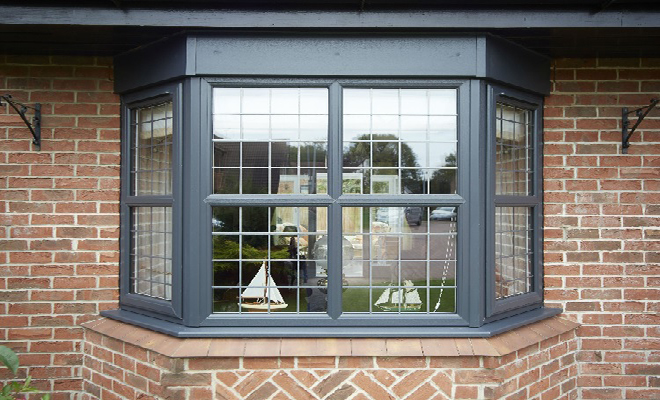
Advantages of bay windows
- ✔ Allow a large amount of natural light into the property.
- ✔ The inclusion of a bay window creates space within a room.
- ✔ Attractive feature of a house.
Disadvantages of bay windows
- ✖ Due to their size, they can be difficult or complicated to install.
- ✖ If one part of the bay window fails, the whole window may need to be replaced.
- ✖ Dressing a bay window with blinds or curtains can be more expensive due to the size and shape.
Bay window prices range from:
| Type of Frame | Average Cost |
|---|---|
| uPVC | £1,000-£2,500 |
| Timber | £1,500-£3,800 |
| Aluminium | £1,250-£3,000 |
Cottage Triple Glazed Window Cost
Cottage windows is a name applied to more traditional style windows such as Georgian or Tudor. The window has the appearance of individual small panes of glass which is created by the application of glazing beads.
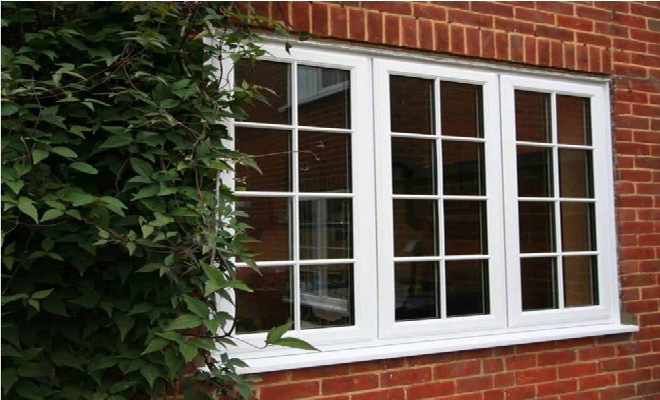
Advantages of cottage windows
- ✔ Give a traditional appearance with modern materials.
- ✔ Retain the character of older and traditional properties.
- ✔ Internal glazing bead gives the appearance of individual panes but is actually a complete pane making it is easier to clean.
- ✔ Available as sash or casement windows.
Disadvantages of cottage windows
- ✖ Will look out of place in a modern home.
- ✖ Cleaning can be tedious if external beading is used to separate the small panes of glass as each pane will need to be cleaned individually.
- ✖ Expensive compared to regular casement or sash windows.
Prices for cottage windows range from:
| Type of Frame | Average Cost |
|---|---|
| uPVC | £900-£2,250 |
| Timber | £1,350-£3,500 |
| Aluminium | £1,000-£2,750 |
Triple Glazing Window Frames
Here is a list of common frame materials for triple glazing windows:
uPVC Window Frame Cost
The type of frame that you choose will have an impact on your triple glazed window cost. From uPVC to aluminium and timber there is a wide variety of designs and style, but the look, durability and maintenance of each frame material will be essential things to consider before you decide.
uPVC is very widely used in double glazing, and the same is true of triple glazed windows. The reasons for its popularity as a frame material are many, and some are listed below.
uPVC Window Frame Advantages
- ✔ uPVC is a low maintenance material not requiring painting or staining, and its upkeep is simply regular cleaning with a warm soapy solution.
- ✔ The versatility of uPVC has been demonstrated in its use in double glazing and doors for many years. This adaptability is now applied to various triple glazed window styles.
- ✔ Always a factor, the price for uPVC window frames is at the lower end of the spectrum, which is reason enough for many to choose it above other options.
uPVC Window Frame Disadvantages
There are some disadvantages to uPVC as a window frame material.
- ✖ uPVC window units are not repairable, and if there is a problem, the whole unit needs to be replaced.
- ✖ The lifespan of uPVC window frames is limited to 10-15 years, and this means replacing them sooner than you would with alternatives.
- ✖ If the incentive for installing triple glazed windows is environmental, then it should be noted that uPVC frames are not as widely recycled as aluminium and timber and can end up in landfill.
Average costs of uPVC window frames:
| Style of Window | Average Cost |
|---|---|
| Casement | £500-£1,250 |
| Flush casement | £600-£1,500 |
| Sash | £750-£1,900 |
| Tilt & turn | £600-£1,550 |
| Bay | £1,000-£2,500 |
| Cottage | £900-£2,250 |
Wood Window Frame Cost
Timber-framed windows are popular for their natural and warm look, especially in more traditional homes and have many advantages.
Wood Window Frame Advantages
- ✔ Wooden window frames have an expected lifespan of around 60 years, with regular and proper maintenance.
- ✔ The look of wooden windows is classic and beautiful; no manmade material can exactly match the qualities of timber window frames.
- ✔ There are many designs and style of triple glazed window frames available in both softwood and hardwood.
- ✔ Timber frames are relatively easy to customise and make bespoke for an individual look.
- ✔ It is a sustainable product and therefore, environmentally sound.
Wood Window Frame Disadvantages
Of course, there are some downsides to triple glazed wooden window frames.
- ✖ They are the most expensive material to construct window frames from, costing around 50% more than uPVC frames.
- ✖ Wooden window frames require a high level of care to maintain their good looks and effectiveness.
- ✖ Timber frames are impacted more than other frame materials by the weather and insects.
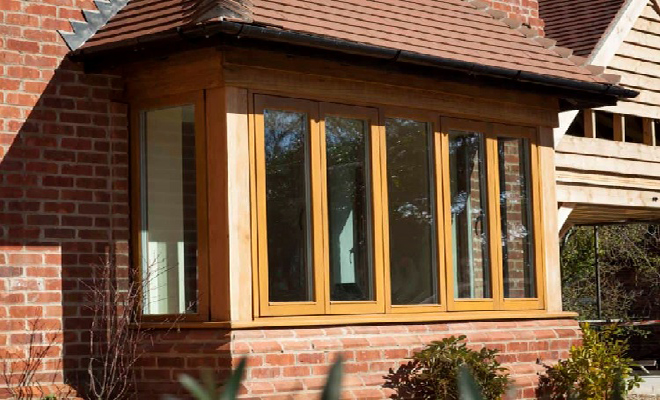
Average costs of timber window frames:
| Style of Window | Average Cost |
|---|---|
| Casement | £750-£1,900 |
| Flush casement | £850-£2,200 |
| Sash | £1,200-£3,000 |
| Tilt & turn | £950-£2,500 |
| Bay | £1,500-£3,800 |
| Cottage | £1,350-£3,500 |
Aluminium Window Frame Cost
Aluminium window frames have become more widely used in the last 20 years and have advantages over their alternatives.
Aluminium Window Frame Advantages
- ✔ Aluminium is a strong but light material and is particularly useful to hold the extra weight of the increased triple glazing thickness.
- ✔ It is a durable material and does not require high levels of maintenance other than cleaning.
- ✔ Aluminium is versatile and can be manufactured in various shapes for bespoke window styles.
- ✔ As a strong material aluminium triple glazed window frames can offer slimmer profiles than timber or uPVC, allowing greater glass surface area and more natural light entering your home.
Aluminium Window Frame Disadvantages
As with the other frame materials aluminium does have its downsides.
- ✖ It has high thermal conductivity and does not hold heat well, which can be a problem in very cold climates as it may make the window more prone to condensation.
- ✖ Aluminium frames can look out of place on older properties.
- ✖ Still relatively expensive compared to uPVC, being approximately 25% more.
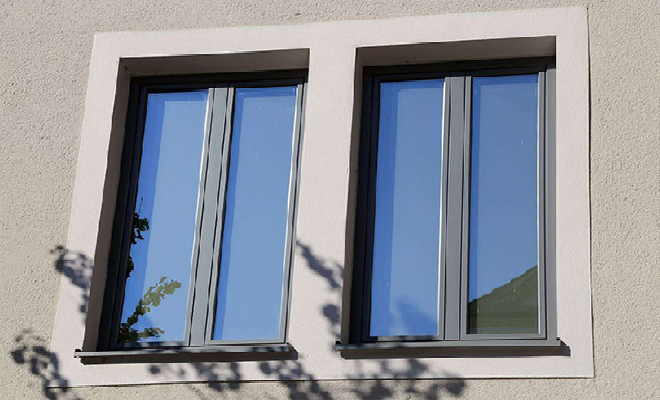
Average costs of aluminium timber frames.
| Style of Window | Average Cost |
|---|---|
| Casement | £650-£1,550 |
| Flush casement | £750-£1,800 |
| Sash | £950-£2,500 |
| Tilt & turn | £800-£2,000 |
| Bay | £1,250-£3,000 |
| Cottage | £1,100-£2,750 |
Building Regulations for Triple Glazing
Since 2002 there are Building Regulations in place for all replacement windows and doors including triple glazing. The regulations relate to thermal performance, safety, ventilation and means of escape.
Thermal performance is measured by WER (Window Energy Rating) and U value. Window energy rating is measured from A++ to E, with most triple glazing being in the A++ category. The energy efficiency of the whole window, frame and glazing, is considered in relation to heat loss, solar gain and air leakage.
The rating indicates the impact of installing certain windows. U value is the measurement of heat loss and the rate at which it is lost; therefore, the lower the U value, the better insulated the window is.
Building Regulations also stipulate that safety glass must be installed on any unobstructed openable area of 0.33sqm and 450mm high x 450mm wide.
Adequate ventilation must be allowed depending on the size and use of the room where the window is located.
Fire safety is also part of the Building Regulations concerning replacement triple glazed windows with standards to be met for means of escape in the event of a fire. These criteria concern the size and location of windows suitable for fire escape.
As a homeowner, it is your responsibility to ensure that the installation is carried out to the standards required by Building Regulations and to obtain and keep the necessary compliance certificate.
A FENSA approved installer will provide this as part of the overall service, but if you lose it, you can order a replacement from their website for a £25 fee.
If the installation is a DIY project then you will need to pay a fee to the building control department of your local authority, the fee will vary between councils, and you will be told how much it will be when you submit your application. To be safe, you should allow at least £200 for this certificate.
These guidelines can be found on the Planning Portal website or the government website dealing with Building Regulations.
As any external doors and windows are classified as a controlled fitting, these regulations are intended to ensure certain standards are met with each installation.
Therefore, it is advisable that your triple glazed windows are installed by a FENSA registered window company or installer as they will be up to date with all the necessary requirements. They will issue a certificate which confirms that the work is compliant with the Building Regulations in relation to window installation.
If you install your triple glazing yourself, you will need to inform the building control department of your local authority, and they will come and inspect the work. If it is all in order the building control officer will issue a compliance certificate which you must keep as it is a legal requirement to produce it in the event of selling your property.
Planning Permission for Triple Glazing
Installing or replacing windows in most cases, fall within permitted development and does not require planning permission. The only exceptions are listed buildings and properties within conservation areas. If either of these applies to your property, then you will need to approach your local authority and enquire how to proceed or consult the Planning Portal.
If you intend to put in a triple glazed bay window where one did not exist before then, you may require planning permission as it can be treated as an extension to the property. You should make enquiries through the building control department of your local council to confirm.
New windows on a side elevation must be fitted with obscure glass and either non-opening or more than 1.7 metres from the ground.
If you do need to apply for planning permission, there is a fee of £60 or more, depending on your local authority.
Cost of Removing Triple Glazed Windows
Given the triple glazed windows cost per m2 of £400-£550, it is hard to think of a reason why someone would remove them. However, some older triple glazing units may fail, leaving you with little choice but to replace them.
Poorly installed triple glazed windows are as vulnerable to deterioration as any other aspect of home improvement, and larger windows may be subject to failure with even slight movement of the building structure. Repair is rarely an option in these cases, and the whole unit will probably need to be removed.
Once removed the windows will need to be replaced, so it is advisable to get a professional company or installer to remove the old triple glazing as part of a replacement project.
They will be able to dispose of the old windows for you. Installers will charge around £150-£200 per day with a normal working team of two meaning labour costs will be approximately £300-£400 per day. Some glazing companies recycle old windows and will give customers an allowance for doing so.
If you decide to remove the triple glazed windows yourself, you will need at least another person to help you and a means of disposing of the old window units. You cannot take them to your local recycling centre, so this could present you with a problem.
There are some companies which offer a window recycling service, but you should be confident that the material is being recycled and not illegally dumped.
uPVC is the biggest problem as timber and aluminium are readily recyclable although bigger window companies are now operating a closed-loop manufacturing system where the product leaves the factory and at the end of its life comes back to be recycled and turn into new windows or doors.
This reduces waste, helps the environment and creates jobs. The other option is to hire a skip and dispose of the windows that way. A skip will cost around £200-£300 per week.
FAQs
How to Find & Hire a Triple Glazing Window Fitter?
The best way to find a competent triple glazing window fitter is to find a FENSA registered fitter. This ensures that anyone is accredited and experienced in fitting triple glazing. There is also the reassurance of the warranty being assured in the event of a company failing before your guarantee has expired.
An installer who is FENSA approved will:
- Comply with Building Regulations.
- Use energy-efficient products.
- Register your triple glazing installation with the relevant local authority.
- Provide you with an assured warranty.
- Provide you with a compliance certificate.
If you can view previous work first-hand, then you can gauge for yourself the quality and professionalism of the finished installation. It may be advisable to view triple glazed windows a few months following installation so that you can ask about any problems that may have occurred since the fitters left.
As with any home improvement work that you are hiring a tradesperson for, you should get at least three quotations. This should confirm the average price that you will be paying depending on your choice, number and size of triple glazed windows. Make sure that you are being quoted like for like by each installer.
You should exercise caution with a window company or individual triple glazing installer who says they can start work immediately as most professional and reputable installers are usually in demand. Check if the installers you are receiving quotations from are members of the Glass and Glazing Federation, FENSA or Certass.
Certass is a competent person scheme that regulates the glazing industry, much like FENSA. All these organisations ensure that their members offer the highest standards in the industry, comply with Building Regulations, use energy-efficient products and are properly insured.
An installer who has none of these accreditations should be avoided. It is also not rude but prudent to ask for references and proof of how much experience an installer has. You will be spending a large amount of money on your new triple glazed windows, and you should ensure that you are getting the best service possible.
Sources
https://www.planningportal.co.uk/info/200130/common_projects/14/doors_and_windows/2
https://energysavingtrust.org.uk/home-energy-efficiency/energy-efficient-windows










